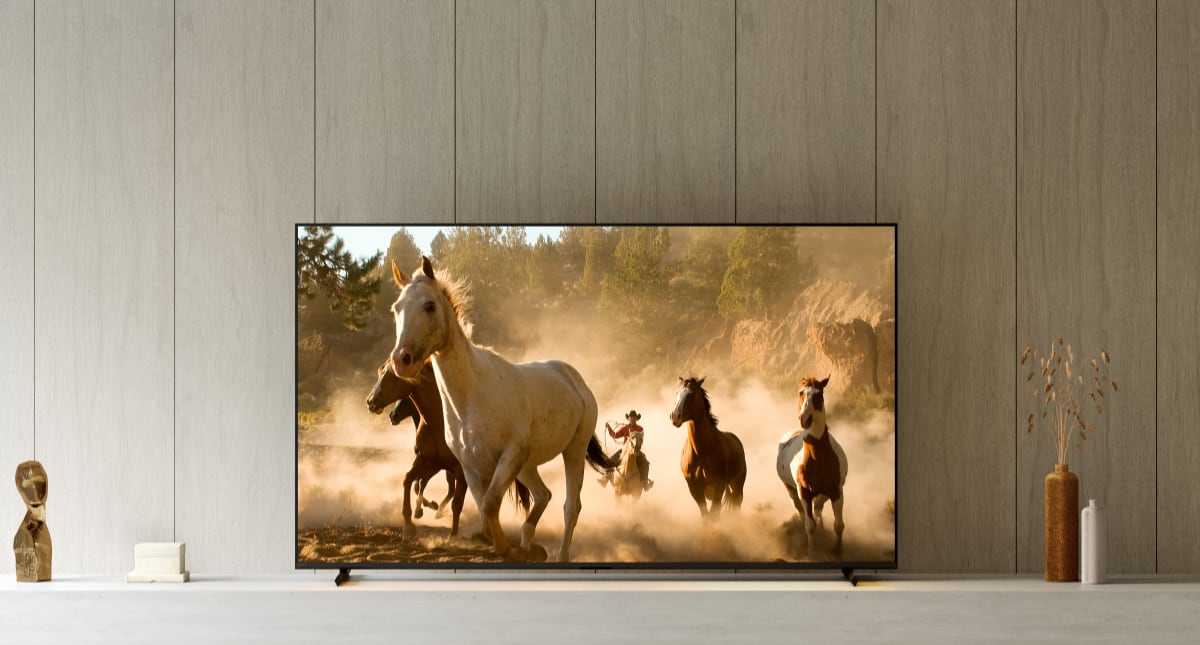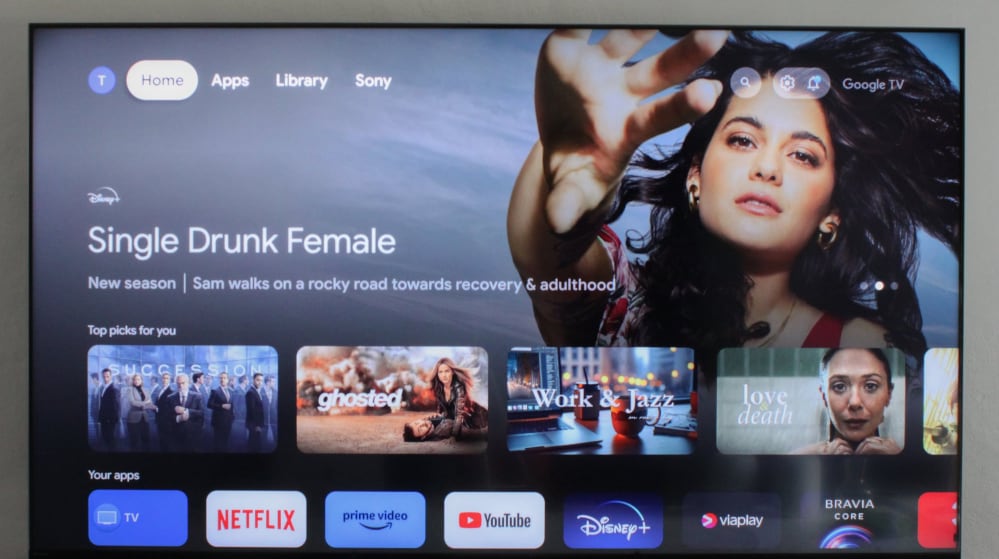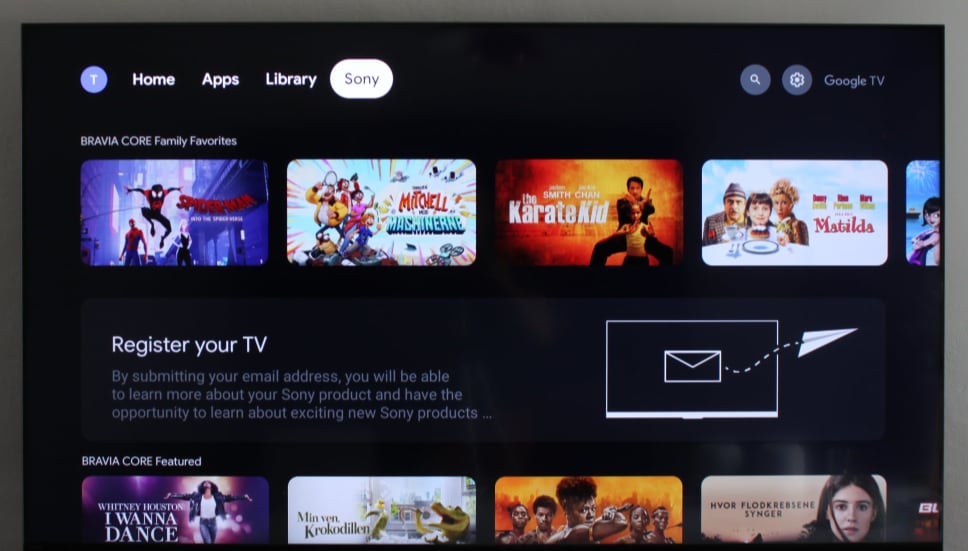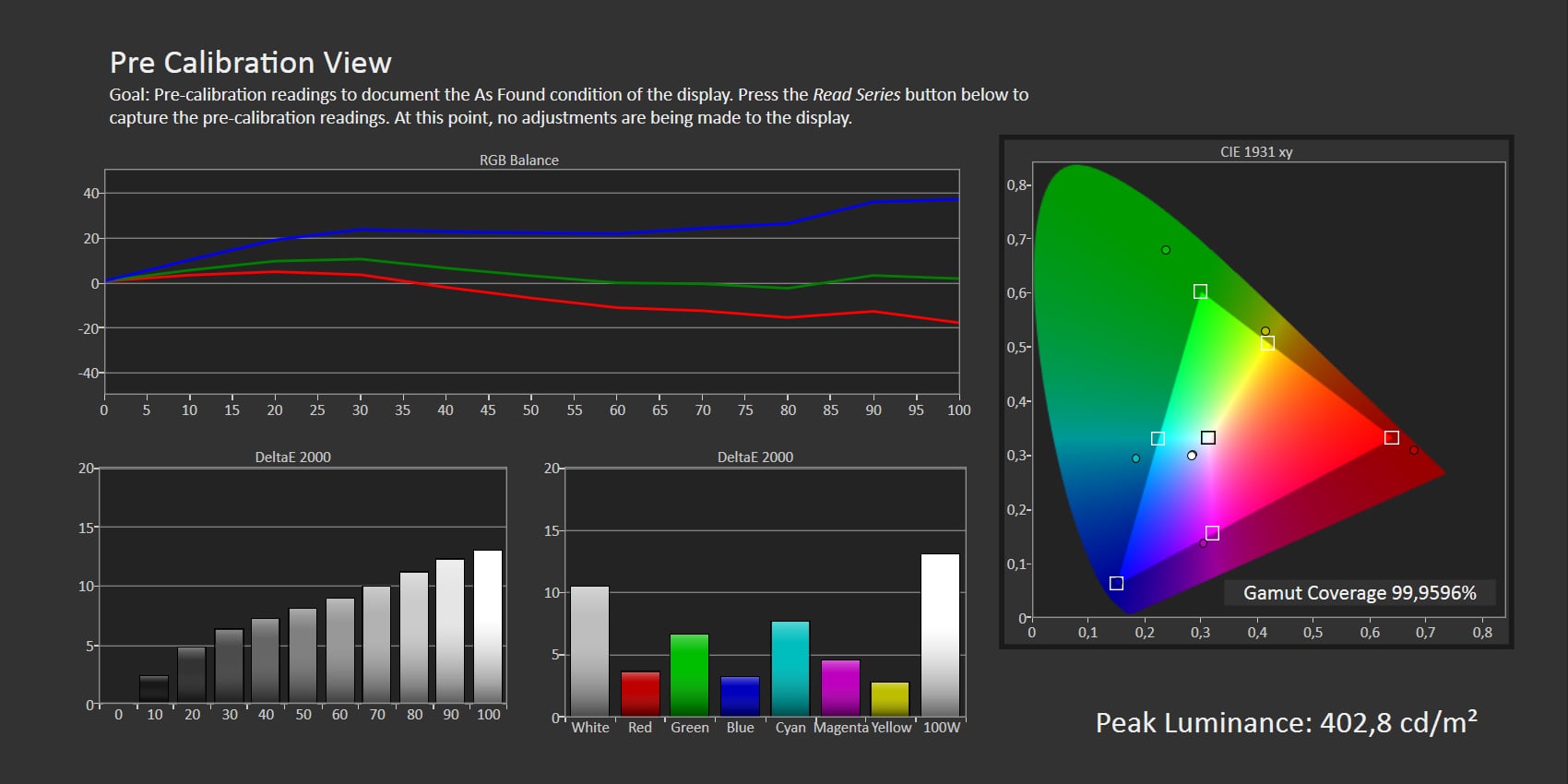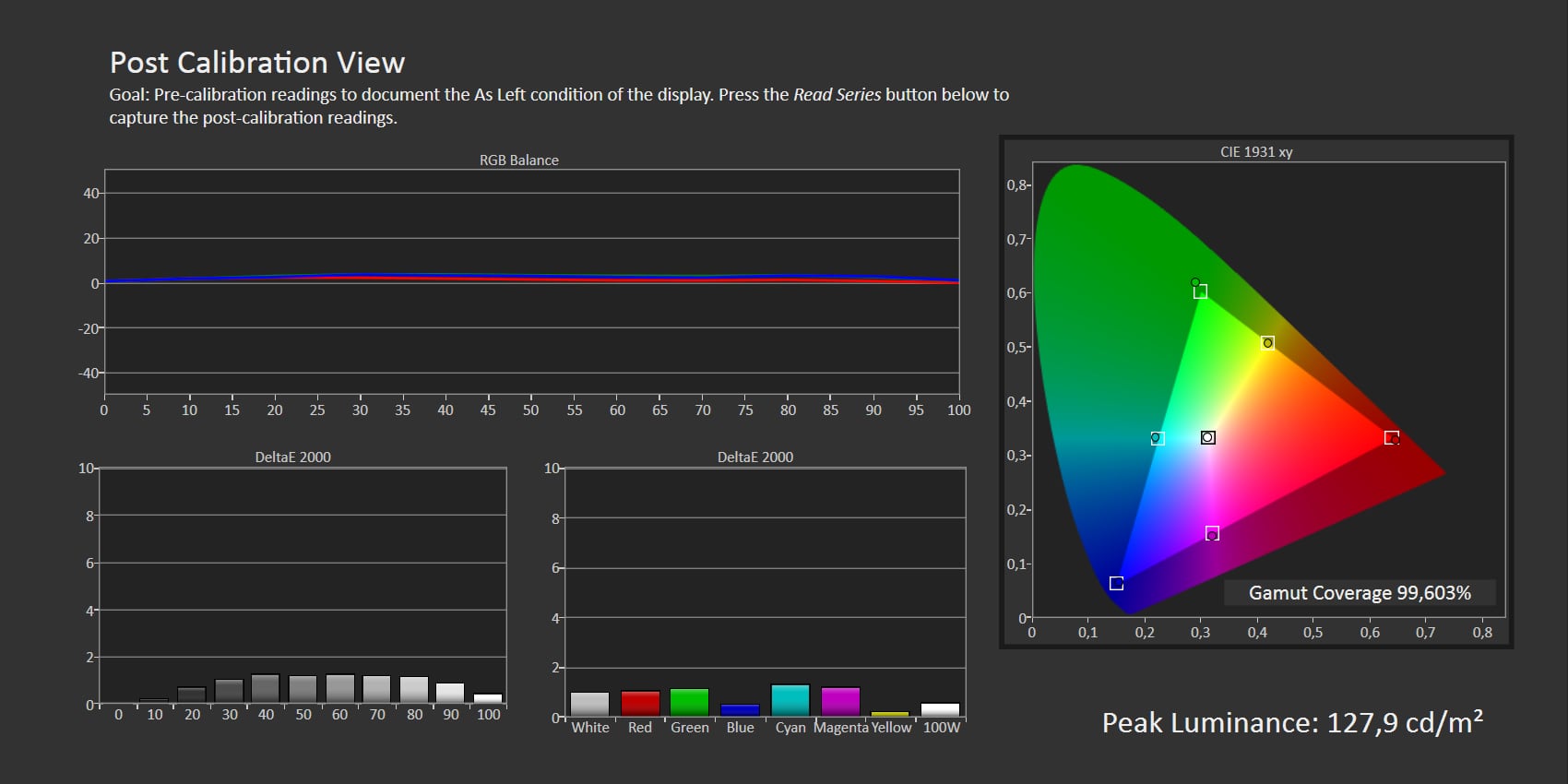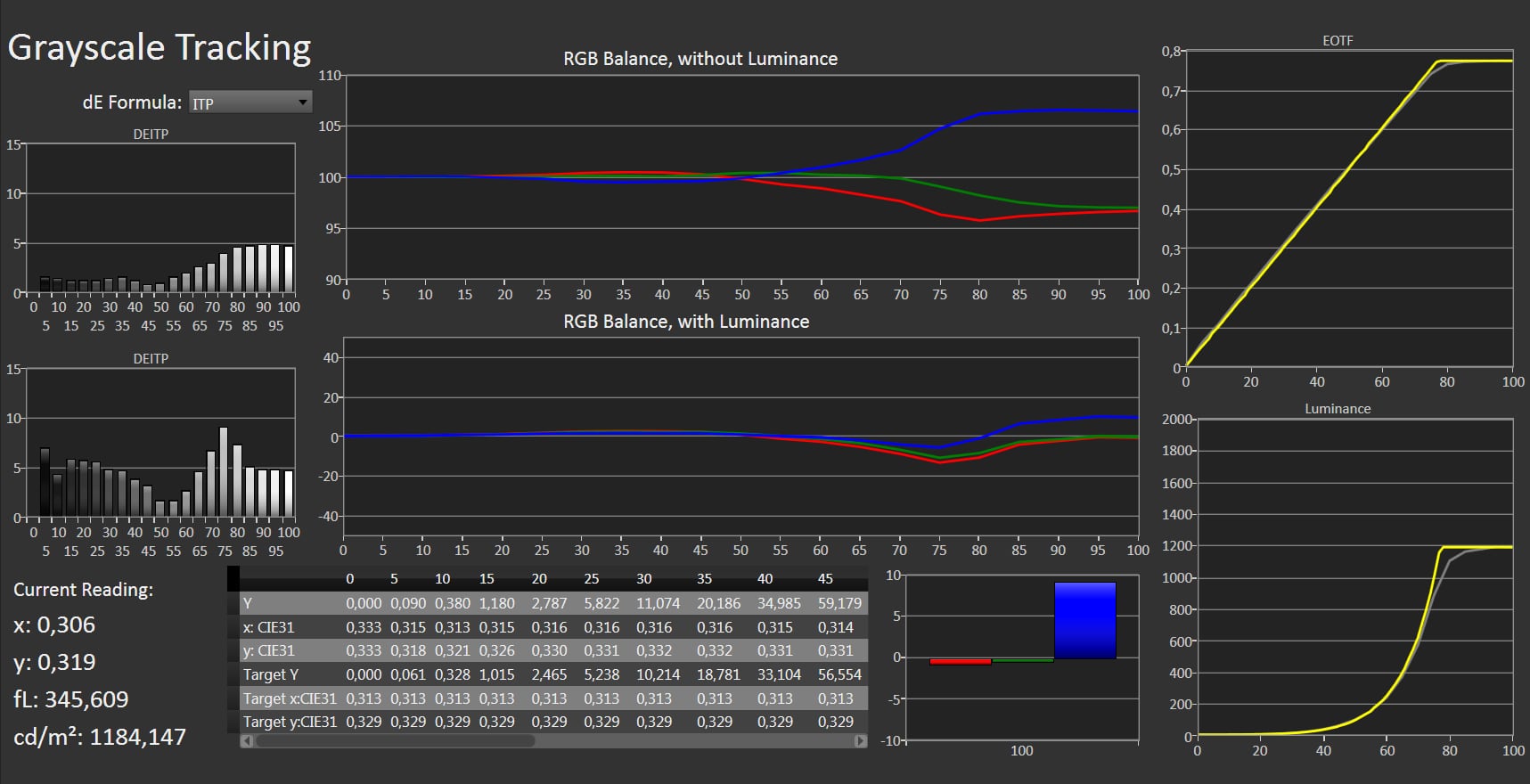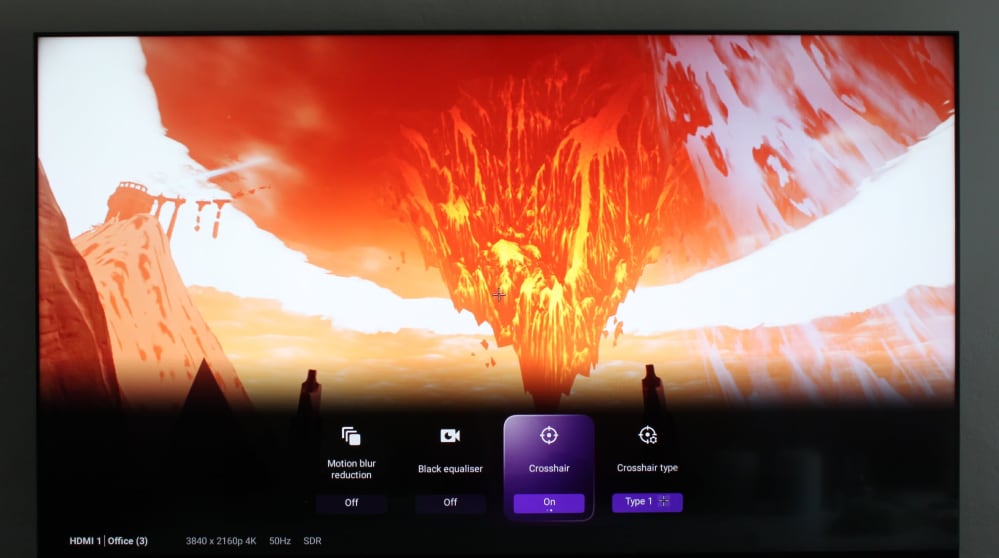Sony X90L
X90L is the 2023 version of Sony's popular 90 series of 4K LCD TVs, this year with an increased number of dimming zones and a new massive 98-inch option. It still runs Google TV with exclusive access to Sony's Bravia Core streaming service and still has only two HDMI 2.1 ports, so the question becomes if new display hardware in the form of the LCD panel with more LED dimming zones is a worthwhile upgrade? Sony X90L is available in sizes ranging from 55 to 98 inches. FlatpanelsHD is testing the 65-inch version. Note that Sony also offers design variants such as X91L, X92L, X93L and X94L with identical picture quality. This review applies to these models, too. Also read: Sony 2023 TV line-upPrice and retailers:
First impressions
X90L looks like Sony's earlier 90 series with the slightly conservative, black and silver bezel design, dominated by plastic materials. It is quite heavy due to the zone dimming system but you can still easily wall mount it. The two metal feet can be mounted in a wide or narrow configuration to ensure that the TV fits even on narrow furniture, which is a neat detail. All inputs face to the side to ensure that the TV can be mounted close to the wall, and there are different compartments on the back that can be hidden with the bundled detachable plastic panels. The textured back looks decent enough but it is a lot of plastic, in case you decide to place X90L more freely in the room away from a wall. Personally, I would try to position it as close to the wall as possible or on the wall. Like previous Sony TVs, X90L still has only two HDMI 2.1 ports capable of 4K120 (one of which is eARC/ARC) plus two standard HDMI 2.0 ports. There is still an optical audio output and an Ethernet port, which remains limited to 100 Mbps.User experience & features
Sony was one of Google's first partners to embrace Android TV and the Japanese electronics maker has since switched all of its new TV models to Google TV with the more personalized homescreen. X90L comes pre-installed with Android 10 which is the same version as in last year's Sony Google TVs – it is getting long in the tooth. Since the introduction of Google TV, manufacturers and Google have adjusted their approach to TV software updates. In the past, all new features were introduced through firmware updates prepared by the TV manufacturer meaning that new Android features were typically slow to roll out. With Google TV, Google has started to push new features server-side meaning that they appear almost instantly on all Google TV devices (regardless of Android version, mostly) without the user having to update anything. There are pros and cons to each approach. As a user, you now get new features more quickly but at the same time you lose control. Google can now without warning change things – even introduce more intrusive ads. While the structure of Google TV is changing, Sony's Google TV hardware has not changed much over the year. X90L still features MediaTek's MT5895 SoC which has now been used for 4 generations of Sony TVs since 2020's Sony XH90. It is limited to 16 GB of free storage (after the Google TV install package) with 3GB of RAM. It is not very fast either. You can use all of the relevant streaming apps including game streaming but the idea of using a Smart TV for much more including to run demanding games locally in hardware – as an alternative to a game console – is still far away from being fulfilled. This was how Nvidia Shield was positioned when it first launch but it has failed in this regard, too. Apple TV 4K is starting to show potential in terms of TV gaming but it will take some time still before an integrated TV platform or external media box can match any dedicated game console. We will have to wait a little longer to confirm how the upgraded MediaTek Pentonic 1000 chip in Sony A95L performs.It is worth mentioned that Sony TVs still come with the Bravia Core app that delivers select movies from Sony Pictures in IMAX Enhanced aspect ratio with up to 80 Mbps bitrate that more or less matches UHD Blu-ray on the video side, meaning that it is also the best-quality streaming out there. It looks fantastic but unfortunately the Ethernet port is still limited to 100 Mbps, which is enough for a maximum of 70 Mbps video bitrate due to overhead. To get around this limitation you must use WiFi or buy a USB Ethernet adapter for your Sony TV. In 2023, Bravia Core is also for the first time adding movies in Dolby Atmos audio. The purchase of X90L entitles the buyer to 10 movie credits to rent premiere movies and 24 months of access to older library titles.Sony X90L - CPU/GPU benchmark
Flatpanels
GeekBench 4 3D Mark - Slingshot Extreme GFXBench - Manhattan 3.1 (offscreen) GFXBench - Aztec Ruins (offscreen) MediaTek MT5895 (Sony XH90, X90J, X90K, X90L) Single: 1195
Multi: 28821148 958 frames 605 frames Nvidia Shield TV Single: 1400
Multi: 41004250 2765 frames 2250 frames Apple A10X (Apple TV 4K 1st Gen) Single: 4000
Multi: 9500- 4500 frames 3300 frames
| Bravia Core streaming | 4K | |||||||||
|---|---|---|---|---|---|---|---|---|---|---|
| Bitrate (Mbps) | 80 | 70 | 60 | 50 | 40 | 30 | 24 | 18 | 14 | 12 |
| Internet speed (Mbps) | 115 | 100 | 86 | 71 | 57 | 43 | 23 | 26 | 20 | 17 |
| Pure Stream | Conventional | |||||||||
Operation
Sony's 2023 remote control is almost identical to last year's version except for the fact that it now has six sponsored buttons (or seven if you also count the Google Assistant button), up from four last year. With Android TV and Google TV devices, the buttons can be reconfigured, unofficially, with a button remapper app but obviously you cannot change the printed logo on top. We wish Sony would dial back its focus on ads and instead focus first and foremost on the user experience, offering user-configurable buttons. Sony's premium pricing strategy shouldn't leave the user with the same number of sponsored buttons and ads as any inexpensive Android TV / Google TV. The remote control itself has been greatly simplified since 2022, which is something we applaud, but it could be further simplified and it feels a bit cheap with its full plastic enclosure and hard rubber buttons. The remote control does not match Sony's premium positioning either.TV audio
Sony's 'Acoustic Multi-Audio' speaker system in X90L lacks clarity in vocals and detail in general. Movies and games tend to sound trapped. The system is designed to enhance vocals and make it appear as if they come directly from the screen but compared to Sony's OLED TVs where the OLED panel is the actual speaker and where voices do sound as if they come from the person on-screen, the effect is very limited on X90L with its LCD panel that cannot be utilized in this way. Instead, the tweeters are in the frame. X90L has better bass than the average TV but I was still left underwhelmed. There is an audio upscaling feature that can up-convert stereo to virtual surround but I did not particularly like the effect. Unlike some of its competitors, Sony provides support for both Dolby and DTS audio formats including Dolby Atmos and the special flavor of IMAX Enhanced DTS audio that will expand to Disney+ later this year. You should not expect much effect from Atmos and IMAX DTS when using the built-in speakers – the speaker hardware sets limitations – but support ensures that you can also output the advanced sound formats via HDMI ARC/eARC to a receiver or soundbar system. In addition, X90L features an 'Advanced auto volume' feature – similar to the "AI" features promoted by other brands – that aims to keep the volume at a constant level across inputs. In our testing it worked quite well but it is not perfect. While the speakers may satisfy the casual viewer, we recommend separate speakers for movies, series and gaming due to the clear limitations in midtones, bass, and perspective.Calibration
Other picture modes
Click the title to expand the view
| Custom (SDR) |
| IMAX (SDR) |
| Game (SDR) |
| Standard (HDR) |
| IMAX (HDR) |
| Game (HDR) |
Measurements
In our "measurements" section we include all measurements and our suggested calibration settings. If you want to learn more about our test methodology click here. Note: Starting in 2021, we implemented a new method for measurement of average power consumption in SDR and HDR, meaning that earlier measurements are not 1:1 comparable. Power consumption in 'Calibrated' SDR mode is measured with the screen to approx. 100-110 nits to normalize the measurement across TV models (our recommended calibrated picture settings may differ). The new method will be used in all TV reviews going forward.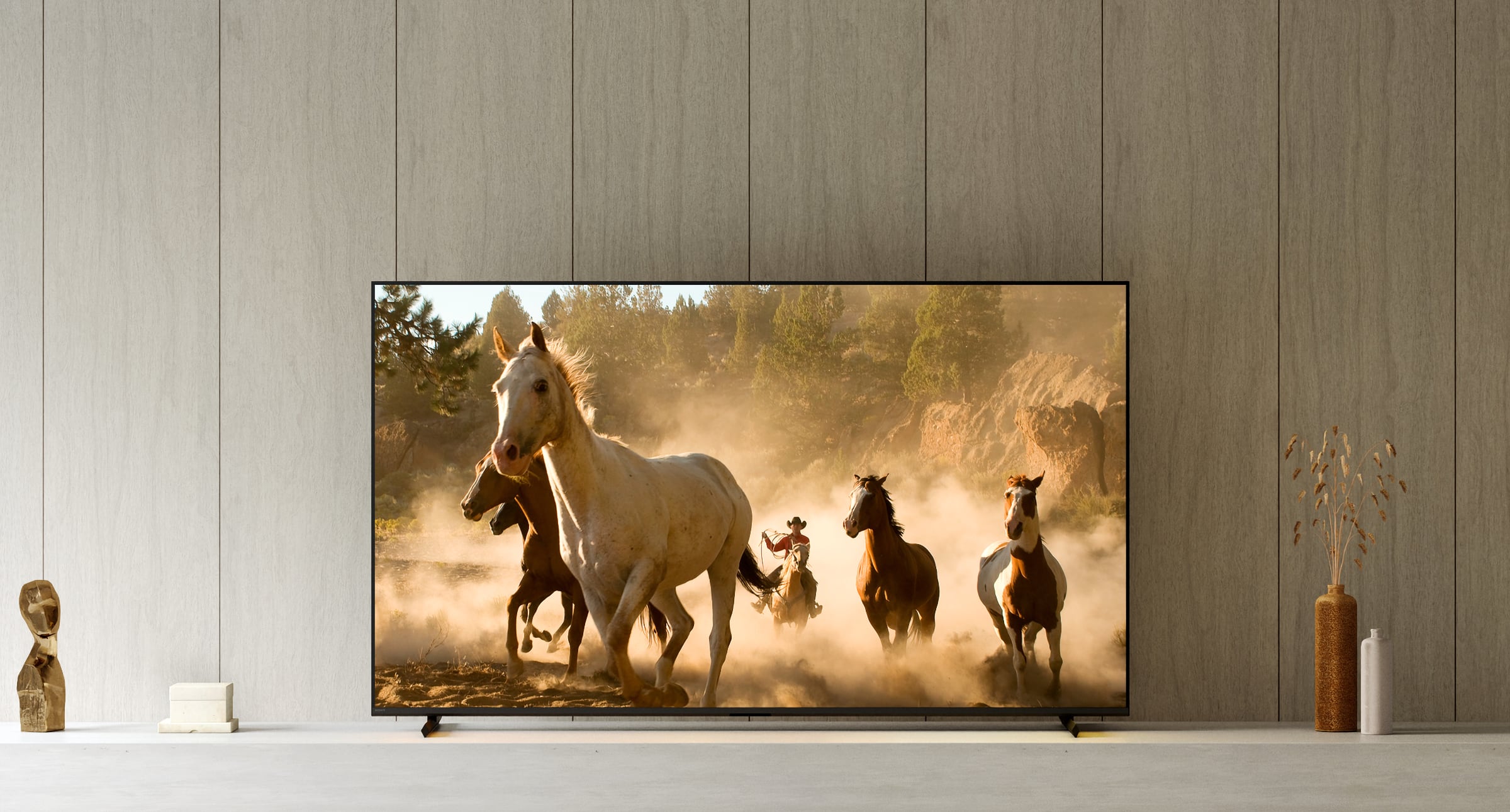
Picture quality
As highlighted in the 'User experience & features' section, Sony X90L uses the same SoC as many previous Sony models and also features the same video processor, so there is nothing new to say that has not already been said. Sony's video processing is excellent including its motion handling with MotionFlow, if you prefer to use it, as well as the smooth gradation feature. Let's instead focus on the changes, specially the increased number of dimming zones in X90L over the previous X90K and X90J models. As usual, Sony does not provide numbers but on our 65-inch sample we counted 8 horizontally and 10 vertically for a total of 80 dimming zones. While this is an increase (we counted 32 zones in the 65-inch X90J in 2021), it is still far too few to ensure great HDR picture quality, regardless of how many nits any LCD TV can push in measurements on test patterns. The small increase in dimming zones doesn't improve HDR picture quality compared to previous Sony's 9-series LCD TVs in a substantial way. We continue to observe diffuse blooming around bright objects and a sort of milky effect to the whole picture in many movie sequences where the backlight system appears to get confused about how to balance its zones, even without the TV coming anywhere close to 1200 nits in most real use cases. In addition‚ it delivers subpar color saturation in HDR. It is a simple concept to understand: Like other VA LCD panels, the VA LCD panel in Sony X90L has a native contrast ratio of around 5000:1 so to hit, for example, 1200 nits in any area of the picture, black depth in the zone area around the object must rise to around 0.25 nits (1200/0.25 ≈ 5000) – a 10x increase over its already modest black level in calibrated SDR mode – and this affects all other dark shades, too. It is no longer black but grey, and it gets worse when you are no longer sitting in the sweet spot directly in front of the TV. This is why the zone system often scales down its aggressiveness to try to some extent to avoid these effects, in turn significantly limiting peak brightness with real movie/game scenes. In theory, more zones will make the halos appear smaller in size but will make them look more pronounced and intense if brightness is increased further – the very best VA LCD panels hover around 7000:1 in contrast ratio. X90L's strengths lie elsewhere specifically sports in SDR format (Standard Dynamic Range), which is how 99% of all sports is delivered, as it has the fullscreen brightness make even the Winter Olympics look bright. X90L is a good allround TV for movies, series, TV programs, and more, helped by Sony's excellent video processing, as long as the content is in SDR format. Of course, some of these strength translate to content encoded in an HDR format if you are watching scenes bathed in sunlight, a sunny field or sports, but fully illuminated bright scenes really have very little to do with HDR (High Dynamic Range, aka contrast) – you can just crank up brightness in SDR mode to achieve the same effect – and ultimately X90L still does not cross the bar for what we believe is HDR picture quality. In terms of gaming, we applaud Sony for its accurate Game mode and you can play all-day everyday without having to worry about screen burn-in (the LED backlight will lose intensity over time, though, as all LED backlights do). X90L automatically jumps into Game Mode with a PlayStation or Xbox/PC with ALLM (Auto Low Latency Mode) where input lag drops from the normal level of almost 140ms to around 20ms for 4K 60Hz gaming. Some competitors deliver lower input lag, but most console players should be satisfied with 20ms and input lag is further reduced by switching to 120Hz or VRR mode, if your console/PC supports it, which is again this year supported on only two of the four HDMI ports. Like all TVs, VRR mode forces X90L's panel back to its most fundamental picture characteristics meaning that the zone dimming and most other enhancement systems no longer engage as intended, so you are left with a very basic LCD panel with 5000:1 contrast. This works well enough for SDR gaming but not HDR, although note even non-VRR gaming in HDR will force X90L to significantly scale back its zone dimming system due to input lag. VRR also causes some flicker. Again, X90L's strengths in terms of gaming also lie in SDR gaming, which most games on the market are available in despite many new games coming out with HDR. Even games available in HDR can without hassle be set to SDR through the settings menu on your console/PC. In SDR, X90L delivers balanced pictures and very bright pictures in brightly living rooms, if you want it to. It is a great TV for playing FIFA. 2023 Sony TVs feature a new Game Menu that can be brought up to reveal useful information and settings for gaming, as seen below. It is a good addition to more or less matches what many competitors offer. The new Game Menu in 2023 Sony TVs
X90L will also come in a massive 98-inch version this year, likely with more dimming zones to match the larger screen area but otherwise more or less the same picture quality as the smaller X90L versions based on our brief time with the 98-inch during a presentation earlier this year. Note that there is currently only one supplier of a 98-inch 4K LCD panel, which is TCL CSoT.
Our sample of X90L had good backlight homogeneity except for slightly darkened corners (see photo below). We noticed it a few times in use.
The VA LCD panel in X90L has narrow viewing angles as seen in the picture below so we do not recommend it for living spaces where some users view the TV from the side.
Conclusion
Sony X90L is fundamentally the same TV as the ones that came before it; same SoC, same video processor, same Android version (10) with Google TV, and still only HDMI 2.1 ports without QMS. The biggest change is that it will later come in a massive 98-inch variant complete with carrying handles!Ad:
X90L has slightly more dimming zones (80 zones in the 65-inch, up from 32) but this minor increase does not change much, and in our view the X90L LCD TV still has too few dimming zones, leading to blooming and clouding, plus a too limited color space to qualify as an HDR TV. Its strengths lie in SDR content where it has excellent video processing, decent contrast and lots of headroom in brightness to shine even in very bright living environments, although still with limitations in black levels, viewing angles and VRR.
Google TV is heavy on ads but otherwise a decent platform for video streaming with a rich selection of apps including apps to enjoy local media such as Kodi and Plex. The MediaTek SoC is capable enough for basic stuff and video decoding of AV1 and HEVC in up to 4K60 but the SoC is getting old and is now several generations behind the fastest media boxes. Sony has in 2023 reserved the newer Pentonic 1000 chip for its flagship A95L.
X90L hasn't changed in a significant way but its value proposition remains. Much better TVs exist, including from Sony such as the 8-series of OLED TVs, and if it is HDR picture quality you want you should spend a little more. However, if you seek a decent TV for allround use with a decent TV platform X90L is expected to still be a fine choice in its price class – as always, we expect the price to drop considerably later in the product lifecycle.
Price and retailers:
SDR picture quality
HDMI 2.1 ports, features
Sony's motion system
Google TV's app selection
HDR picture quality, too few dimming zones
Google TV limitations in most regions
Lack of hardware upgrades
Only two HDMI 2.1 ports

